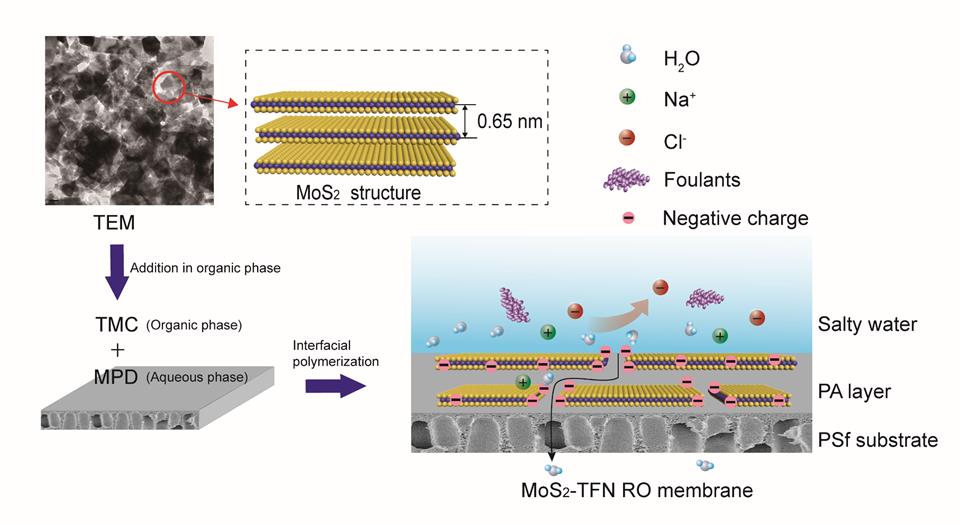
Reverse osmosis (RO) desalination technology is one of the most effective approaches for addressing the worldwide water scarcity by producing fresh water from sea water, groundwater and other wastewater sources. However, the traditional method required ehigh nergy consumption, and the process is constrained by several challenges including limited water flux, insufficient salt rejection and an inferior fouling resistance. Highly perm-selective and inexpensive antifouling RO membranes are required in order to reduce the cost and energy input associated with water desalination.
In recent years, with the development of two dimensional (2D) nanomaterials, new strategies for fabrication and modification of thin film nanocomposite (TFN) RO membranes emerged. It was found that atomically thickness 2D layered materials open a new way for tailoring the membrane structure, mechanical strength, surface hydrophilicity, surface charge, charge density and surface roughness in the PA skin layer.
Based on this, the research group of Membrane Science and Technology led by Prof. ZHANG Kaisong from Institute of Urban Environment, Chinese Academy of Sciences, synthesized 2D graphene analogue molybdenum disulfide (MoS2) in high-throughput through ultrasound-assisted solvent exfoliation. The exfoliated layered MoS2 nanosheets had a thickness of ca. 2.2 nm with 2-3 layers and highly negatively charged properties.
A novel thin film nanocomposite (TFN) reverse osmosis (RO) membrane was successfully fabricated with prepared laminar MoS2 as fillers in the organic phase through interfacial polymerization of m-phenylenediamine and trimesoyl chloride monomers.
Transmission electron microscopy (TEM) confirmed that the laminar nanosheets were dispersed in the PA matrix as well as on the membrane surface.
Compared with pristine membrane and commercial RO membrane (BW-30), the modified TFN membrane showed an enhanced water flux and salt rejection as well as a good protein fouling resistance. It was mainly ascribed to the improved membrane surface hydrophilicity.
In addition, the electrostatic repulsions among membrane surface, salt ions and negatively charged foulants were enhanced because of the incorporated highly negatively charged 2D nanosheets, giving rise to an improved salt rejection and fouling resistance.
It is believed that TFN RO membranes modified with 2D nanomaterial with special properties may represent the next generation of high-performance RO membranes in water desalination.
This work was published in Desalination with the title of "Thin film nanocomposite reverse osmosis membrane modified by two dimensional laminar MoS2with improved desalination performance and fouling-resistant characteristics".
This work was financially supported by the Key Project of International Cooperation, the Bureau of International Cooperation, the Chinese Academy of Sciences and the Key Project of Frontier Science, CAS.

Figure. Scheme of MoS2-TFN membrane fabrication process and the underlying mechanism for superior desalination performance. (Image by ZHANG Kaisong)

86-10-68597521 (day)
86-10-68597289 (night)

52 Sanlihe Rd., Xicheng District,
Beijing, China (100864)

